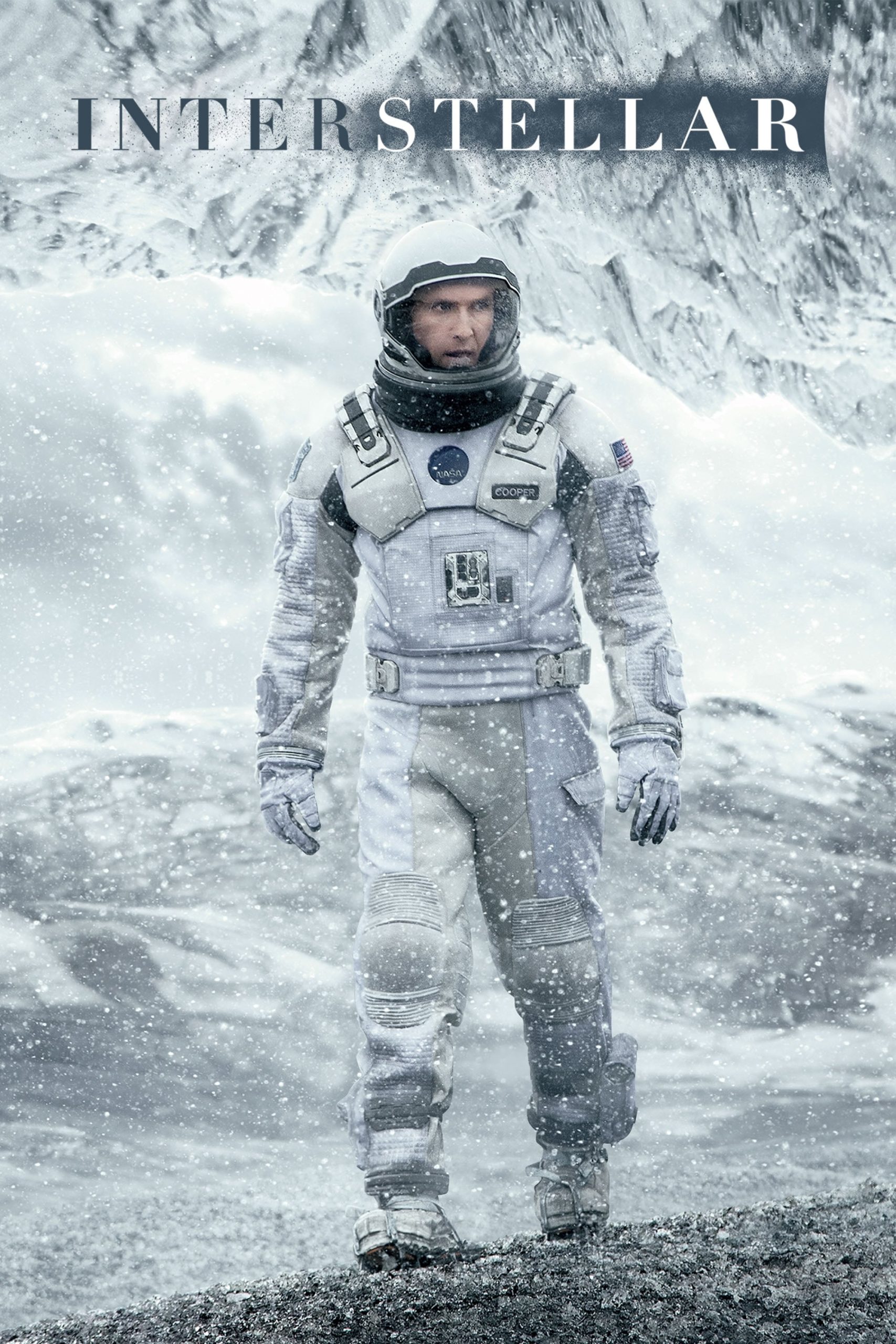
The adventures of a group of explorers who make use of a newly discovered wormhole to surpass the limitations on human space travel and conquer the vast distances involved in an interstellar voyage.
24 Jan Interstellar (2014)
Dissymmetries, sight
The good news that we have the brothers reunited and again working on circular narrative. Again, we have a powerful narrative arc that shifts in unexpected and engages in expected ways.
The device is hackneyed: messages from the future, but is handled deftly. Where it is clumsy, we are competently distracted by narrative and visual process. The love story that drives this is novel enough to not fall into one of the three formulas commonly used for ‘love,’ (despite McConaughey) or two for father-rescues-daughter. We have a chosen child who saves the world by supernatural intervention, but again, this doesn’t distract. These accomplishments alone make this worth experiencing because many devices are used to reset our expectations from formulas. Some fail horribly and that keeps this film from my absolute essential viewing list; I’ll get to those in a moment. But all that are under the control of the filmmaker are so well considered that they bear mention.
Take, for example the visual setting. The story itself is about the folding of time, but in a subtle way. The time of the story is in the future, but the setting is in the past. We refer to the dustbowl. All the cars, buildings, clothes and verbal expressions are vaguely from that era. We never see a brand that would pin down the time.
More powerfully, the film itself is made as a science fiction film would be in the 50s-60s, using notions and tropes from that era. The robot is from “Forbidden Planet.” The notion that a world-saving enterprise rests on the mathematical attempts of one man alone. That a vast enterprise is actually secret and located in one spot, with no suppliers. That construction of a spaceship requires welding sparks. That a heavy lift launch can occur in a building.
Look at the computer screens. Nearly all are command-line interfaces. The switches and control panels are from the DEW line era. They haven’t managed to use legacy fonts in the signage, but it looks like they avoided the most obvious: Helvetica.
Even the drone is a currently obsolete model.
Underscoring all this is setting the film in Texas. Malick, and before him Bogdanovich, Hooper, Welles exploited the fact that Texas lives in two eras, sucking riches from the present while defining itself in some fictitious and better past.
But the film is also clearly in a future, after anti-science politicians have written technology out of the textbooks, denying the moon landing and forcing something named NASA underground. The ambiguity of time is conveyed subconsciously and works. I think they used some recorded interviews from the actual dustbowl era.
But the flaw, the underlying decay in this film is in who they relied on for the science. They clearly separated the science of the adopted genre (noted above) from the science used in the actual extraterrestrial events. They chose renown physicist Kip Thorne as their authority.
The man is an important scientist and reportedly very engaging. But the world of such scientists is divided between those who believe in the primary eminence of geometry and those who believe instead in ordered mechanics. This is a deep divide, highly polarised when the work gets going.
Which is better for the problems at hand is irrelevant here. But which is better for cinematic depictions of encounters with the forces of the world… well there is no contest and Nolan chose unwisely. I may write about this. A good title may be the Carl Sagan effect.
On other unrelated matters, some unresolved minor plot threads remain. The finished film exceeded the time budget for story-before-launch as it is, but we’d like to know what the reason for introducing the drone was and why it was important.
A bit worse: In the film, we have a very hard won ability to send messages back in time, describing deep science from inside a black hole. I get that. But ‘before’ all those events, some other souls sent back messages and the physical artifact of the wormhole. Why not use that mechanism, unless the much-mentioned notion of the urges of love are essential to the bridge?
Posted in 2014
Ted’s Evaluation — 3 of 3: Worth watching.


No Comments